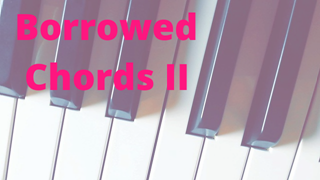The following two tabs change content below.


Greg Lee
Hi, my name is Greg Lee. I'm the creator of the Color Score Professional/Visual Chord Learning System. I love to share ideas and concepts about piano and keyboard playing in all styles of music. I believe the key to learning is having fun and making complicated things simple with visual tools and illustrations.
Latest posts by Greg Lee (see all)
- What is a minor/Major 7 Chord? - October 26, 2023
- 7 Chord Substitutions that Professionals Use - October 19, 2023
- 5 Simple Chord Tricks to Sound Amazing - October 5, 2023


 keys. We only covered the primary chords of those keys. I mentioned that you also have secondary chords in which you can borrow from.
keys. We only covered the primary chords of those keys. I mentioned that you also have secondary chords in which you can borrow from. The diatonic harmony of C Major:
The diatonic harmony of C Major:






 The diatonic harmony of C minor is our resource for our borrowed chords just as was in the last article.
The diatonic harmony of C minor is our resource for our borrowed chords just as was in the last article.







 Or the VII chord for the I VII vi progression
Or the VII chord for the I VII vi progression




